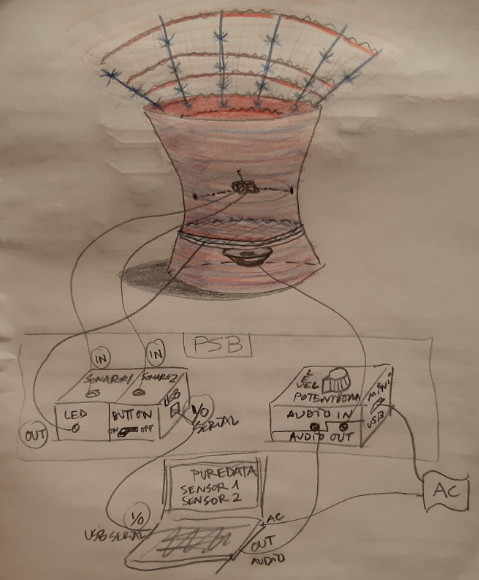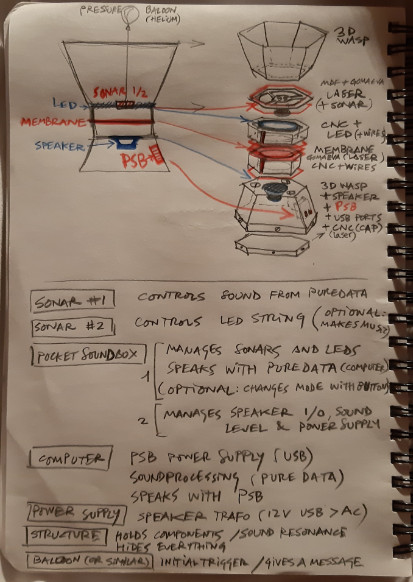13. Applications and implications¶
This week I worked on 1 task(s) on Applications and implications in order to ‘define the scope of a project‘ and to ‘develop a project plan’. This was the assignment:
Individual assignment:¶
Propose a final project that integrates the range of units covered. See Final Project Requirements for a complete list of requirements you must fulfil.
Your project should incorporate:
- 2D and 3D design,
- additive and subtractive fabrication processes,
- electronics design and production,
- microcontroller interfacing and programming,
- system integration and packaging.
Where possible, you should make rather than buy the parts of your project.
Projects can be separate or joint, but need to show individual mastery of the skills, and be independently operable.
SUMMARY¶
-
Have you answered these questions? > DONE
- what will it do?
- who has done what beforehand?
- what materials and components will be required?
- where will they come from?
- how much will it cost?
The answers to the questions above will allow you to create your BOM, or Bill Of Materials.
- what parts and systems will be made?
- what processes will be used?
- what tasks need to be completed?
- what other questions need to be answered?
- what is the schedule?
- how will it be evaluated?
NOTE: As the project idea changed near to the end of the Fab Academy, I moved the previous working advances on this week to the ‘other project‘ page.
The updated information here is related to the actual final project All Ways Sound, so I’m colecting its info to answer these questions.
ASSIGNMENT | Individual - Define the project¶
Bill Of Materials¶
What will it do?
The project is a sculpture/installation focused on remind the people the relevance of sound in human life. The device emmits a kind of light and a kind of noise autonomously until something/someone gets near (over) it.
who has done what beforehand?
Léon Theremin, who patented the device ‘Theremin‘ in 1928 made something similar but with other physical principles. Over the world are a lot of examples of doing sound with physical interaction.
what materials and components will be required? where will they come from? how much will it cost?

Procedure¶
what parts and systems will be made? what processes will be used?
All Ways Sound design takes in consideration a few ideas:
- Amplify the sound physically
- Human interaction size
- Case for components visually unatractive
- Rigid parts to stay up without supports
- Simmetry, colour and bightness for esthetic


According to these criterias, the design can be unfolded on these parts and measures | fabrication technologies:
- 2 almost similar big conichal (morph between and hexagon and a circle) PLA 3 mm thickness printed shapes for both amplifying system and for components case | Made with a big Delta printer
- 1 central 180 mm ring-type MDF structure (connecting 6 30 mm thickness) to hold the inputs/outputs and to attach the PLA pieces | Made by cutting on CNC
- 2 5 mm acrylic round pieces in where the inputs/outputs are attached (these pieces are part of the central structure) | Made by lasercutting
- 1 round PCV 0,7 mm membrane at the center of the structure to work as a drum | Made by thermoforming
- 1 hexagonal MDF 30 mm thickness base in which the components stay (power supply and boards) | Made by cutting on CNC
- 1 case (square MDF 3 mm thickness, transparent 0.8 mm thickness glasspack parabolic shape) for boards and input/output connections | Made by lasercutting and thermoforming
- 2 PCB dedicated to control the sensors and to amplify the sound signal | Made by precission milling and soldering
what tasks need to be completed?
- Materials-tools order
- Device 2D/3D design
- Electronics design-production
- Microcontroller programming
- Case 3Dprint/lasercut/mold-cast/thermoform
- Case vinylcut customization
- Bill of materials
- Process-Device slide-video-web documentation
what other questions need to be answered?
On next steps, which kind of improvements could be made and how much the project can expand to other limits?
what is the schedule?
Here, I show a first idea of the schedule to follow on Final Project development:

Warning with other assignments needings!
how will it be evaluated?
From week01 - Principles and practices, these were my Principles:
I started thinking in my project putting the focus in some basic ideas.
“During project I must be able to develop a device with this principles… “:
- make something useful
- make an improvement of something that already exists
- make something that could be made by others with low costs
- make something achievable
- make something scalable
- make something that could integrate in&out behaviours
- make something that could integrate as many skills and technologies as learnt during the Fab Academy
- make something in which electronics plays a major role
Also, I added this features to my list:
- make something that I like and that inspires me
- make something in a field that I have some experience
But some things changed since then:
-
In general, I want to be able to develop and finish a simple and functional device that could work with sound in the most easy way, but also with some interesting interactivity.
-
The target is to put the focus on the sound experience to put it in value in human lives.
-
With this project, I want to bring the presence of sound closer to understanding and awareness, so that the experience allows us to remember it later, in day to day.